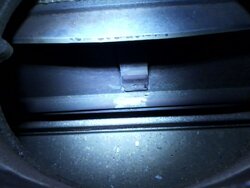I am new to stoves and new to my Harman TL300. I've read up all the forums I could on it, but I there's some things I haven't quite understood yet.
(1) Exactly what level of draft does this thing need? The natural height of my chimney was initially a straight 12 ft including 4 feet of flu, and even though the manual says it needs 16 ft minimum, my dealer said there's did not have 16 and it was fine. Well, It initially was so sluggish on lower settings, especially with the after burn engaged, that I added another 4 ft section, and although it is better now I am tempted to add another. So for you TL300 users, how tall is your chimney (I understand this is a simplistic idea of draft), AND how do you feel the stove performs? Do you think I should go up?
(2) Inside the house my flu is a single wall telescoping pipe - so at some point there are two layers of it. Would this affect the flu temps? I am running quite low in after burn (275) - even though it seems to be running fine and kicking heat.
(3) Or is all of this symptomatic of only 11 month old oak?
(4) In trying to tighten the damper bar, in the flu collar with the damper close (per manual instructions) I cannot see the damper tightening screw - only from inside the firebox there are two screws. Does yours look like this and which one do you tighten?
(1) Exactly what level of draft does this thing need? The natural height of my chimney was initially a straight 12 ft including 4 feet of flu, and even though the manual says it needs 16 ft minimum, my dealer said there's did not have 16 and it was fine. Well, It initially was so sluggish on lower settings, especially with the after burn engaged, that I added another 4 ft section, and although it is better now I am tempted to add another. So for you TL300 users, how tall is your chimney (I understand this is a simplistic idea of draft), AND how do you feel the stove performs? Do you think I should go up?
(2) Inside the house my flu is a single wall telescoping pipe - so at some point there are two layers of it. Would this affect the flu temps? I am running quite low in after burn (275) - even though it seems to be running fine and kicking heat.
(3) Or is all of this symptomatic of only 11 month old oak?
(4) In trying to tighten the damper bar, in the flu collar with the damper close (per manual instructions) I cannot see the damper tightening screw - only from inside the firebox there are two screws. Does yours look like this and which one do you tighten?


